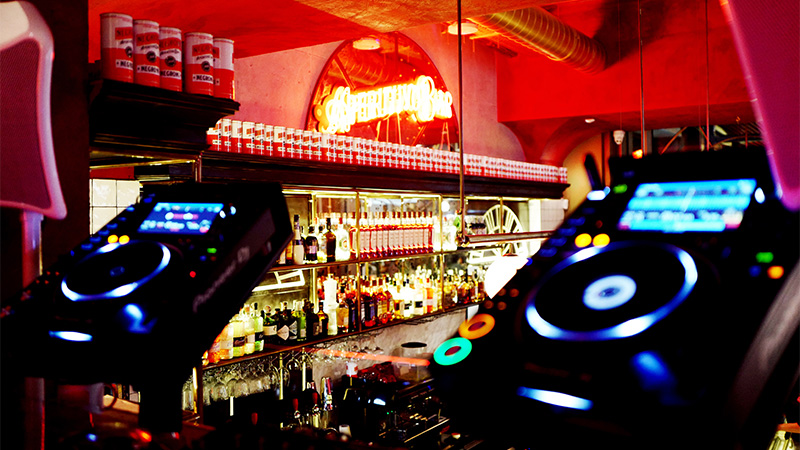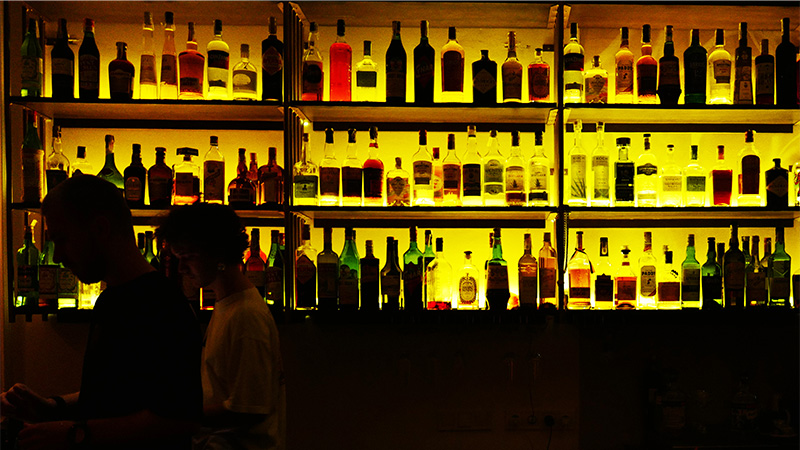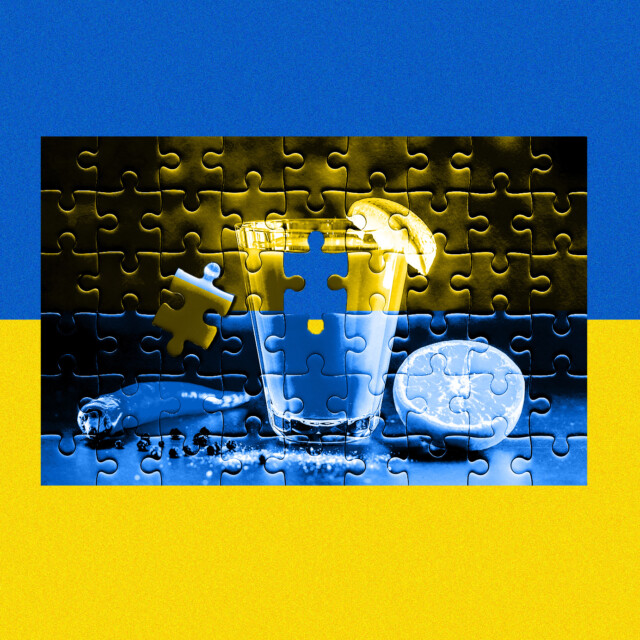In October 2023, during my last stint in Ukraine reporting on the ongoing war with Russia, I ducked out to neighboring Romania for a desperately needed break from work. The Ukrainian bars and restaurants that sustained and impressed me at every turn, from the overstuffed chocolate Suprême croissants from Cheese Bakery in Lviv that transported me back to Lafayette in New York, to the nuanced hospitality of displaced bartenders from Kyiv to Kharkov, all of whom had one unexpected, tequila-centric gesture in common.
But the moment I crossed the border into Romania, I became gluttonous for Americana, and gorged on Tupelo chicken tenders and Rockin’ Fresh Ritas at an empty waterfront Hard Rock Cafe in Bucharest’s Herastrau Park. After so many empty calories. I realized I was actually missing the simple pleasures of my work in Ukraine, so I went in search of them around the local bar scene, hitting up newcomers like Bar Ton, a high-design listening bar anchoring an old communist apartment block, and the more raucous Negroni Aperitivo Bar a few blocks away.
Negroni was hidden within a massive new office building, its multiple bars visible behind the high-rise lobby’s interior glass walls — but there was no door. A security guard walked me outside and pointed around the corner and down a dark side street. In the distance, an ominous red glow bled into the night, marking what looked like the entrance to a loading dock. I’d heard about Negroni during my time in Ukraine; the bar’s owners, Sheina Miretska and Vadym Teslukh, were behind the original Negroni location in Kyiv, which opened in 2020. That same year their first project, Zelda Bar, in their native Odesa, was named the best bar in Ukraine. Zelda has worn that title with pride as it continues to operate despite its precarious location just blocks from the Black Sea harbor where Russian warships had staged frequent air assaults on the city.

“We set up a date to sign the contract to open a second Zelda in Kyiv, and I remember looking out the window at bombs falling, and thinking, ‘What is this war? I need to open a bar,’” Miretska told me, recalling the first day of the Russian invasion in February 2022. “I was in Odesa, and living near the seaport where I had a sea view, so I had a front row for all the missile attacks.”
Miretska and Teslukh left Ukraine soon after, though their bars remain open. Miretska still checks on her staff by taking an overnight bus through Moldova, a return trip she compares to sticking a knife in an old wound. Still, they have found some solace resettling and expanding among like- minded people.
“Romanians remind us of the southern people of Ukraine; they’re easygoing, party starters, loud, emotional — we adore them,” she says. “And they had a hard history. Even after joining the EU, they had political crises, and Covid, so I can see the bar scene here is less developed — but I know they also aim for more. They’re curious, and they want to try something new.”
What’s new for Romanians has been a welcome curiosity among Ukrainians, one they carry forth as they seek new opportunities beyond their borders: Sangrita, the acidic, tomato juice-based chaser to what’s typically a shot of tequila. A constant in Mexico for the past century, it was now almost as common across Ukraine as it was in Jalisco. But how did it arrive there?
The New Drink in Town
I told Miretska about my recent journey across Ukraine, and how one night in Lviv kicked off with tequila and Sangrita shots at Sino Experimental, a local cocktail bar founded by former Patrón brand ambassador Andrii Osypchuk. We were out drinking despite an ongoing air alert, and I wasn’t sure what was more surreal: that nobody was seeking shelter, or that Osypchuk had just placed a killer Sangrita in front of me.
Osypchuk, who had traveled multiple times to Mexico in the past for work, still couldn’t put his finger on the pairing’s origins in Ukraine. He explained how his recipe for a clarified smoked Sangrita was so instantly popular when he introduced it on Sino’s menu that he large-batched the non-alcoholic sidekick during Covid and sold it to customers.
After the warning expired, our crawl continued. We moved to Bar Over, a newly opened spinoff of The Ditch, the greatest bar standing in Kharkov, a few miles from the Russian border. Bar Over was tucked away on the second floor of what appeared from the outside to be a private residence. As soon as we reached the top of the stairs, owner Misha Yehorov greeted us with tequila shots and his own homemade Sangrita.

That level of hospitality — and the desire to seek it out under duress — made sense to Miretska.
“Soon after the war began, when there were tanks running around the city center, I was worried how my friends on the front line would accept us reopening,” she reflected. “But they all told me, ‘We are dying for you to have a better life, so if you have something to celebrate, go celebrate; it’s better to release the stress than lose your mind.’ So that’s what I did. Every time there was a massive missile attack, I realized I am free and I can open my eyes and say, ‘Here are my arms and my legs, and I can celebrate.’”
She explained how everyone was afraid in the early days of the invasion, though channels on Telegram and similar apps have since made receiving the most current information easier, so they know whether planes and drones are on the attack, a training run, or passing through. But what did she make of the Sangrita?
She pointed toward herself, a freshly lit cigarette between her fingers, and smiled with knowing pride. She credited its introduction in Ukraine to her colleague Vasily Shilofost, co-owner of Parovoz, a decade-old speakeasy in a Kyiv basement that set the standard for the country’s current bar scene and was recently added to the World’s 50 Best Discovery list.
“He’s our sainted mixologist, a pioneer of the ‘90s bar scene [and] all bars in Ukraine, and when [Vadym and I] decided to open Zelda, we decided to collaborate with him,” Miretska says.
Dima Kolomiets, a Diageo reserve brand ambassador based in Kyiv who recently departed Parovoz after eight years behind the bar, confirmed Miretska’s story.
“We told people: You feel better drinking tequila this way. It’s more balanced, [and] you will feel the destination of Tequila, not only the spirit. Now people know it’s the only proper way to drink it.”
“The story goes back to September 2015,” Kolomiets recalls. “We were in Russia at the Moscow Bar Show, where we met the team from El Copitas, a St. Petersburg bar which specializes in agave spirits. They served tequila in horses’ hooves paired with Sangrita.”
El Copitas, which opened in 2015, was last ranked No. 8 on the 2021 World’s 50 Best Bars list. But in 2022, William Reed (the organization behind the list) announced that Russian bars and restaurants would no longer be recognized following the Russian invasion. It was the same year the World’s 50 Best restaurant awards were meant to be held in Moscow, before they were moved to London.
“We brought it back to Kyiv, and it spread from here,” Kolomiets says of the Sangrita, affirming it was Vasily who ushered in the movement at Zelda soon after. At the same time, Parovoz introduced mixology courses; the bar team has shared their techniques with close to 1,000 students through in-person and online training over the past nine years.
“We told people: You feel better drinking tequila this way,” Mirteska says, as the drink offered a more rounded tasting experience for guests. “It’s more balanced, [and] you will feel the destination of Tequila, not only the spirit. Now people know it’s the only proper way to drink it.”
Osypchuk framed it more pragmatically; he uses Sangrita to wean customers off the old ways of salt and lime, promising them a lessened hangover.
Found in Translation
Unlike in Jalisco, Sangrita is served alongside both mezcal and tequila in Ukraine, Kolomiets explained. The chaser first served as a way to make mezcal more palatable to Ukrainians; the spirit was first introduced to the country through brands like La Herencia de Sanchez, Vida, and Montelobos.
“People were very afraid to drink mezcal at first, but we earned their trust by pairing it with Sangrita, and they got the high from the combination of flavors,” he says.
The chaser’s journey from the Moscow Bar Show is a feel-good story, a reminder of the vital role the hospitality industry plays in soft-power diplomacy. But the memory upsets Kolomiets, as he tells it, nonetheless: When the war began, he deleted all his contacts with Russian bartenders. It wasn’t my intention, but I could tell I had stuck a knife in an old wound. Like so many of his compatriots, he risks being drafted. Faced with the prospect of going from serving customers to serving on the front, steeling oneself has become a means of survival over the past two years. “Now I don’t want to remember when we were still friends with bars from Russia,” he says.
Now that the appeal of the Sangrita-tequila pairing has spread across Ukraine, Miretska is determined to bring the chaser to Romania, but she knows crossing borders is never easy.
“They don’t keep tomato juice here,” she says, appalled. “They asked what was in it, and I explained: tomato juice, tabasco, lime juice. They said, ‘That’s cool, but we only have apple juice behind the bar.’”
Mirteska says she couldn’t help but laugh — it may have been the greatest indignity she’d suffered yet.
